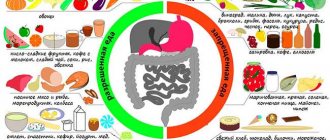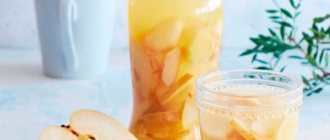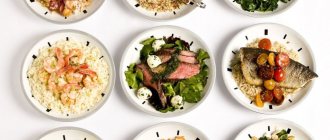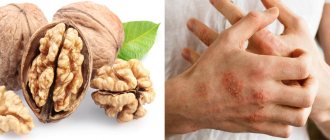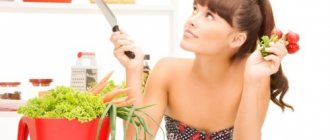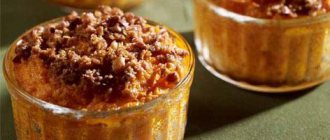- September 3, 2018
- Gastroenterology
- Lyubov Kiseleva
Gastritis is a form of pathology that requires complex treatment. Drug therapy prescribed to gastroenterology patients is necessarily practiced with the introduction of a therapeutic diet for gastritis. Diet - table 5 - the most optimal option for patients. It includes lists of foods that you can eat and those that you should avoid. Proper nutrition helps patients normalize the process of bile outflow and restore digestive function.
Allowed foods for diet 5 for gastritis of the stomach
Let's consider the diet that will help recovery. Gastroenterologists prescribe diet number 5 for their patients. For gastritis, number 4 is also used, but in the article we will dwell in detail on the first option. Proper nutrition involves a balance of foods rich in proteins and carbohydrates. The list of permitted foods for following a diet for gastritis (Diet 5) is strictly compiled by the attending physician. The following products are distinguished:
- Bread and buns. They must be prepared using second and third grade flour.
- Berries and fruits, preferably non-acidic varieties and without peel.
- Vegetables subject to heat treatment.
- Refined oil (sunflower or olive).
- Cereal products (buckwheat, rice, oatmeal).
- Cow's milk.
- Fermented milk products with a small percentage of fat.
- Meat and fish should be low-fat varieties. It is best to include rabbit and turkey meat in your diet.
- Soups based on vegetable broths with the addition of noodles and various cereals.
Patients on a diet for gastritis - table 5 - can afford sweets in the form of natural honey, marshmallows and marshmallows.
Table No. 1 for gastritis
Table number one Mikhail Pevzner recommends using it for peptic ulcers of the stomach and duodenum during the recovery period, as well as for mild exacerbations of the disease. In addition, diet No. 1 is suitable for mild exacerbation of chronic gastritis (with preserved or increased gastric secretion) and during the recovery period for acute gastritis.
Diet No. 1 is suitable for mild exacerbation of chronic gastritis and during the recovery period for acute gastritis
Thanks to the developed diet, inflammation is reduced, ulcers heal better, and the secretory and motor functions of the stomach are normalized. Although the diet has some restrictions on products and methods of cooking, such a diet is complete both in terms of calories and the content of proteins, fats, and carbohydrates.
In the acute form and exacerbation of gastritis, nutrition helps relieve inflammation, which is achieved through pureed and quickly digestible food. Table 1a (up to a week), 1b (up to 14 days) and 1 will provide long-term remission. For the first couple of days, food needs to be wiped, then it is enough to eat veal, rabbit, chicken, only chewing thoroughly.
The diet is the first table, a gentle menu is followed for up to 3 months, after which they switch to general nutrition, but with a limitation of seasonings, marinades, and spicy foods. Also minimize the use of any sweets.
The diet of the first table is consistent in the presence of nutrients, proteins, fats, carbohydrates:
- fats – 100 grams (30% vegetable, 70% animal allowed);
- salt – up to 12 grams;
- carbohydrates – no more than 450 grams;
- proteins – 100 grams (40% vegetable, 60% animal);
- water - at least 1.8-2 liters.
The daily norm of dietary treatment table No. 1 is 3100 kcal.
What foods should you avoid?
The diet for gastritis, or the 5th table diet, does not allow the consumption of the following foods:
- Soups should be prepared only with vegetable broths. You cannot cook them in broth made from meat, fish and mushrooms.
- Vegetables such as lettuce, radishes, sorrel and white cabbage should be excluded from the diet.
- Mushrooms should not be eaten.
- Marinades and seasonings are irritating to the gastric mucosa. They can cause an exacerbation of the disease.
- Fruits and berries of sour varieties are excluded from the menu, especially for patients with high acidity of gastric juice. Once in the stomach, they will not only promote flatulence, but also stimulate the production of hydrochloric acid.
- The diet for gastritis, or the 5th table diet, does not involve the use of barley, pearl barley and corn in the diet.
- The taboo applies to all legumes. The exception is green beans.
Gastritis. Treatment table N1 and N2.

The first numbers of therapeutic diets are intended for patients with gastritis. Table N1, as well as Table N1a and Table N1b, are prescribed for gastritis with increased or preserved acidity. Table N2 - for chronic gastritis with low acidity.
Gastritis unites a whole group of different diseases of the stomach associated with inflammation of its lining. Among diseases of the digestive system, gastritis is the most common. People can suffer from chronic forms of it throughout their lives. This can lead to the death of the stomach glands that produce gastric juice and to atrophy of the mucous membrane. This type of gastritis is called atrophic. Also, against the background of constant inflammation, erosions occur - this is erosive gastritis.
The main variants of chronic gastritis:
The presence of Helicobacter pylori in humans. This is the most common cause of stomach diseases. With prolonged infection by this microorganism, chronic inflammation occurs, which often leads to atrophic gastritis.
Autoimmune gastritis occurs against the background of the immune system perceiving certain cells of the gastric mucosa as a foreign object, which also leads to atrophic gastritis.
The cause of chemical gastritis is the reflux of bile into the stomach or exposure to certain medications.
Symptoms of gastritis:
Pain in the upper abdomen, which can occur regardless of food intake; feeling of heaviness in the stomach, discomfort, rapid satiety; Sometimes there is nausea, vomiting, loss of appetite.
But often chronic gastritis occurs without pronounced symptoms and latent inflammation destroys the gastric glands, which ultimately leads to atrophy of the mucosa. Therefore, it is very important to engage in prevention and timely detection and treatment of the disease. The most important part of treatment is special diets.
Table N1. For gastritis with high acidity, gastric ulcer and duodenal ulcer. (6-12 months after exacerbation).
All food should be warm and chopped, steamed or boiled, but not fried! The number of meals is 5-6 times a day. It is useful to include milk or non-acidic dairy products in your diet, as milk normalizes the increased acidity of the stomach. If milk is intolerant, it is replaced with slimy soups.
It is important to exclude from the diet foods that irritate the gastric mucosa. These are marinades, smoked meats, pickles, onions, garlic, spices, mustard; as well as rich meat, mushroom and fish broths.
Basic composition of Diet N1:
pureed milk and vegetable soups (without cabbage); cereal mucous soups (but not meat or fish); boiled chopped vegetables (mashed potatoes, puddings); mashed porridge with butter and milk; boiled meat, boiled low-fat fish (cod, perch, pike); steamed meat and fish cutlets, boiled chicken without skin; butter, sunflower, olive oil; milk, sour milk, cream, low-fat pureed cottage cheese, sour cream; soft-boiled eggs, steam omelet; white stale bread, white dry crackers; sweet varieties of berries and fruits; vegetable, berry, fruit juices; rosehip infusion, jelly, sweet berry compotes, weak tea, cocoa with milk, sugar, jam. As the condition improves, the food is boiled, but not pureed. Salt is limited to 8 grams per day. Add vitamins A, C, group B.
detailed description and example of a daily menu Table No. 1.
Table N1A. For exacerbations of gastric and duodenal ulcers, exacerbations of chronic gastritis with high acidity.
milk (4-5 glasses), mucous cereals, such as semolina, milk or wheat bran soups with butter;
liquid, pureed, milk porridges; soft-boiled eggs (2-3 pieces per day) or steam omelet; steam soufflés made from lean fish or meat; unsalted butter (70-80 g per day) or olive oil (add to dishes), cream; berry, fruit (non-acidic) and milk jelly, carrot, fruit juices, rosehip decoction, weak tea with milk (sugar up to 50 g per day). Limit salt to 5-8 g (remember that 3-5 g of salt is contained in foods, 5-8 g in bread), free liquid no more than 1.5 liters.
Additionally, vitamins A, C, group B (B1, B2, PP). Eating food during bed rest every 2-3 hours in liquid and semi-liquid form, warm form. If milk is poorly tolerated (flatulence, diarrhea), it is recommended to give it in small quantities, diluting it with weak tea.
detailed description and example of a daily menu Table No. 1A.
Table N1B. Indicated for the subsidence of exacerbation of peptic ulcers and chronic gastritis with high acidity after diet No. 1A.
Ingredients: in addition to the dishes listed above, steamed meat and fish dishes in the form of quenelles, steamed cutlets, pureed milk soups from rice, barley, pearl barley with pureed vegetables are allowed; mashed porridge with milk; wheat crackers up to 100 g. Salt is limited to 8 g, additionally - vitamins A, C, group B. Six meals a day in semi-liquid and puree form.
detailed description and example of a daily menu Table No. 1B.
Table No. 2 For gastritis with low acidity.
This diet helps stimulate the secretory function of the stomach, eliminating mechanical irritation of its mucosa. To do this, the menu includes lean meat products, strong broths, vegetable and fish soups, low-fat fish, baked vegetables and fruits (frying them in butter is allowed), coffee, juices, cocoa.
If the acidity of the stomach is low, you should not eat foods that cause fermentation processes (fresh dough products, whole milk, grapes, etc.) and foods that require hard work of the stomach for digestion (cream, animal fats and sour cream).
Various culinary treatments are allowed, excluding breaded frying. Fluid intake is not limited. Table salt is allowed. The food temperature should be warm.
Menu composition for gastritis with low acidity:
fish and meat soups in a weak broth, vegetarian vegetable soups with the addition of meat quenelles or meatballs, pea soup is allowed;
fresh cottage cheese, steamed cutlets, boiled chicken, pasta, mild cheeses, various cereals, soft-boiled eggs, lean ham; white crackers, dry biscuits, steam omelettes, a little butter; meat and fish should be lean varieties, chopped, baked or fried (but without breading and not in butter), but boiled is preferable; The only fats you can use are vegetable oils (maximum 2 teaspoons) due to the fact that fats take a very long time to digest in the stomach. Vegetable oils heal damage to the mucous membrane; You can eat any fruit, sweet varieties of berries (strawberries and raspberries), jam, vegetables and herbs in the form of puree. Spinach and sorrel are excluded! Drinks allowed include diluted cream, fruit and berry non-acidic juices, jelly, compotes, water with lemon and sugar, coffee (no more than 1 cup per day), cocoa with milk.
The diet requires the exclusion of foods high in coarse fiber. These are white cabbage, turnips, radishes, apple peels, coarse-skinned berries (currants, gooseberries, grapes, dates), raisins, prunes, and wholemeal bread. It is also necessary to exclude fatty and stringy meat, smoked meats, canned food, spices, refractory fats, cream, sour cream, whole milk, fresh dough products, and rich pies.
It is recommended to drink half a glass of water with lemon juice half an hour before meals. For lunch you can have a pickled cucumber or a slice of herring, a sandwich with caviar. Kumis and kvass stimulate gastric secretion well, but you shouldn’t get carried away with them.
detailed description and example of a daily menu Table No. 2.
Table N 1, 1A, 1B Gastritis with high acidity, peptic ulcer of the stomach and duodenum. Table N 2 Gastritis with low acidity, enteritis, colitis. Table No. 3 Chronic intestinal diseases with constipation. Table N 4, 4B, 4B Intestinal diseases with diarrhea. Table N 5, 5A, 5P Diseases of the liver and gall bladder. Table No. 6 Gout, urolithiasis (uraturia). Table N 7, 7A, 7B, 7B Acute and chronic nephritis (pyelonephritis, glomeuronephritis). Table No. 8 Obesity. Table N 9 Diabetes mellitus. Table N 10, 10A, 10I, 10C Diseases of the cardiovascular system. Table N 11 Tuberculosis. Table No. 12 Diseases of the nervous system. Table No. 13 Acute infectious diseases. Table N 14 Urolithiasis (phosphaturia). Table No. 15 Various diseases that do not require special therapeutic diets during the recovery period.
General recommendations for cooking
Please pay attention to the following points:
- Food should not be too cold or hot.
- Food should be well chopped. Porridge and vegetables are pureed, and fish and meat are finely chopped.
- You should not eat foods that increase the secretion of hydrochloric acid in the stomach, as well as all smoked, fried and spicy foods.
- All dishes must be boiled, baked or steamed.
- A single meal portion should be equal to two human palms.
- You should eat at least six times with a food break of three hours.
What not to eat on diet No. 5
| Name | Prohibited Products |
| Beverages |
|
| Soups |
|
| Cereals and porridges |
|
| Pasta |
|
| Fish, meat, meat products |
|
| Bread |
|
| Dairy and fermented milk products |
|
| Vegetables and mushrooms |
|
| Berries and fruits |
|
| Eggs | Fried eggs. |
| Oil |
|
| Snacks |
|
| Sauces and seasonings |
|
| Dessert |
|
Menu for Monday
Five meals might look like this:
- For breakfast, it is recommended to eat porridge made from oatmeal. It can be cooked either in water or using cow's milk. After the porridge, you can eat a sandwich consisting of a piece of day-old rye bread and a slice of low-fat cheese. All this should be washed down with dried fruit compote.
- The first snack after breakfast should be light, so you can eat one fruit, for example, a sweet baked apple.
- Lunch should consist of soup in vegetable broth with the addition of cereals and a glass of compote.
- For the second snack, drink a glass of warm cow's milk with a cracker.
- A vinaigrette is prepared for dinner. The main thing is to exclude pickles, beans and sauerkraut from it. Season the vinaigrette with vegetable or olive oil. You can also eat boiled yolk and kefir with dried fruits.
Fully or partially limited products
Therapeutic nutrition for gastritis/stomach ulcers against the background of normal/high acidity (Table No. 1) excludes from the diet:
- Highly extractive broths/soups based on them.
- Fatty varieties/types of red meat, sausages, canned and smoked meats, poultry meat (duck, goose), canned meat and semi-finished products, fast food, products with connective tissue (cartilage, skin, veins).
- Fresh wheat/rye bread, bakery products, butter/puff pastry, dumplings, dumplings, pancakes.
- Fatty fish, fish caviar, canned fish, seafood.
- Some types of cereals (corn, barley, millet, pearl barley), coarse pasta.
- Pickled/salted/pickled vegetables, legumes (chickpeas, beans, peas), canned vegetables, mushrooms, as well as sorrel, onions, turnips, radishes, white cabbage, which cause increased secretion and irritate the gastrointestinal mucosa.
- Fats (animal/cooking), margarine, mayonnaise, pastry cream.
- Fried/hard boiled chicken eggs.
- Fermented milk products with high acidity.
- Tomato-based sauces, horseradish, mustard, spices.
- Sour/peeled fruits and berries, sweets, dried fruits, ice cream, chocolate, sweet carbonated and alcoholic drinks.
Table of prohibited products
| Proteins, g | Fats, g | Carbohydrates, g | Calories, kcal | |
Vegetables and greens | ||||
| vegetables legumes | 9,1 | 1,6 | 27,0 | 168 |
| swede | 1,2 | 0,1 | 7,7 | 37 |
| cabbage | 1,8 | 0,1 | 4,7 | 27 |
| sauerkraut | 1,8 | 0,1 | 4,4 | 19 |
| green onion | 1,3 | 0,0 | 4,6 | 19 |
| bulb onions | 1,4 | 0,0 | 10,4 | 41 |
| cucumbers | 0,8 | 0,1 | 2,8 | 15 |
| canned cucumbers | 2,8 | 0,0 | 1,3 | 16 |
| white radish | 1,4 | 0,0 | 4,1 | 21 |
| turnip | 1,5 | 0,1 | 6,2 | 30 |
| canned tomatoes | 1,1 | 0,1 | 3,5 | 20 |
| horseradish | 3,2 | 0,4 | 10,5 | 56 |
| spinach | 2,9 | 0,3 | 2,0 | 22 |
| sorrel | 1,5 | 0,3 | 2,9 | 19 |
Mushrooms | ||||
| mushrooms | 3,5 | 2,0 | 2,5 | 30 |
Snacks | ||||
| potato chips | 5,5 | 30,0 | 53,0 | 520 |
Cereals and porridges | ||||
| corn grits | 8,3 | 1,2 | 75,0 | 337 |
| pearl barley | 9,3 | 1,1 | 73,7 | 320 |
| millet cereal | 11,5 | 3,3 | 69,3 | 348 |
| brown rice | 7,4 | 1,8 | 72,9 | 337 |
| barley grits | 10,4 | 1,3 | 66,3 | 324 |
Flour and pasta | ||||
| vareniki | 7,6 | 2,3 | 18,7 | 155 |
| dumplings | 11,9 | 12,4 | 29,0 | 275 |
Bakery products | ||||
| buns | 7,2 | 6,2 | 51,0 | 317 |
| rye-wheat bread | 8,1 | 3,4 | 42,2 | 222 |
| bran bread | 7,5 | 1,3 | 45,2 | 227 |
Confectionery | ||||
| jam | 0,3 | 0,2 | 63,0 | 263 |
| candies | 4,3 | 19,8 | 67,5 | 453 |
| dough | 7,9 | 1,4 | 50,6 | 234 |
Ice cream | ||||
| ice cream | 3,7 | 6,9 | 22,1 | 189 |
Cakes | ||||
| cake | 4,4 | 23,4 | 45,2 | 407 |
Chocolate | ||||
| chocolate | 5,4 | 35,3 | 56,5 | 544 |
Raw materials and seasonings | ||||
| mustard | 5,7 | 6,4 | 22,0 | 162 |
| ginger | 1,8 | 0,8 | 15,8 | 80 |
| ketchup | 1,8 | 1,0 | 22,2 | 93 |
| mayonnaise | 2,4 | 67,0 | 3,9 | 627 |
| ground black pepper | 10,4 | 3,3 | 38,7 | 251 |
| chilli | 2,0 | 0,2 | 9,5 | 40 |
Cheeses and cottage cheese | ||||
| glazed cheese | 8,5 | 27,8 | 32,0 | 407 |
Meat products | ||||
| fatty pork | 11,4 | 49,3 | 0,0 | 489 |
| ham | 22,6 | 20,9 | 0,0 | 279 |
Sausages | ||||
| smoked sausage | 28,2 | 27,5 | 0,0 | 360 |
| dry-cured sausage | 24,1 | 38,3 | 1,0 | 455 |
| sausages | 10,1 | 31,6 | 1,9 | 332 |
| sausages | 12,3 | 25,3 | 0,0 | 277 |
Bird | ||||
| smoked chicken | 27,5 | 8,2 | 0,0 | 184 |
| duck | 16,5 | 61,2 | 0,0 | 346 |
| smoked duck | 19,0 | 28,4 | 0,0 | 337 |
| goose | 16,1 | 33,3 | 0,0 | 364 |
Fish and seafood | ||||
| dried fish | 17,5 | 4,6 | 0,0 | 139 |
| smoked fish | 26,8 | 9,9 | 0,0 | 196 |
| canned fish | 17,5 | 2,0 | 0,0 | 88 |
Oils and fats | ||||
| creamy margarine | 0,5 | 82,0 | 0,0 | 745 |
| animal fat | 0,0 | 99,7 | 0,0 | 897 |
| cooking fat | 0,0 | 99,7 | 0,0 | 897 |
Alcoholic drinks | ||||
| cognac | 0,0 | 0,0 | 0,1 | 239 |
| beer | 0,3 | 0,0 | 4,6 | 42 |
Non-alcoholic drinks | ||||
| bread kvass | 0,2 | 0,0 | 5,2 | 27 |
| * data is per 100 g of product | ||||
Menu for Tuesday
- You can have breakfast with cheesecakes baked in the oven. Also eat a portion of buckwheat porridge, a small piece of cheese and wash it all down with rosehip decoction.
- For second breakfast, you should eat a portion of cottage cheese with pieces of fruit. You can make freshly squeezed juice from carrots and sweet apples.
- For lunch - vegetable soup, baked chicken fillet and pasta. Green tea with a spoon of honey is suitable as a drink.
- You should have an afternoon snack with a protein omelette with cow's milk, cooked in a double boiler, with a slice of day-old bread.
- For dinner there will be stewed cauliflower, boiled lean fish and egg yolk. Complete your meal with a glass of herbal infusion.
Recipes for some dishes on diet No. 1
(weight of products is indicated per serving)
- Rice milk porridge. Place rice (50g) in boiling water (85 ml). When thickening, add hot milk (100 ml), salt and sugar (5g), stir. Bring to readiness, avoiding a strong boil. Serve with a piece of butter (5g)
- Cauliflower soup. Wash cauliflower (100 g), boil (400 ml of water) and wipe. Prepare the lesion: thoroughly mix the chicken egg (10 g), gradually adding hot milk (75 ml) to it. Prepare white milk sauce: mix 5 g of dried wheat flour and 75 ml of milk, heat with constant stirring, without bringing to a boil, cool. Add milk sauce and a little salt to the vegetable broth and, bringing to a boil, remove from the stove. Season with lezion and butter (5 g)
- Boiled chicken. Pour raw chicken (100 g), chopped carrots (10 g) and parsley root (5 g) with cold water, bring to a boil, then skim off the foam and add salt to the broth. Cooking time: 1 hour. Cool the meat, cut into pieces, add parsley
- Boiled potatoes with dill. Place peeled potatoes (250 g) in boiling water, add salt and cook until tender. Drain the water. Serve, sprinkled with dill (10 g) and butter (10 g)
- Boiled cod. Cut the washed fish (120 g) into pieces, put in a saucepan (saucepan, frying pan with high walls), cover with cold water. When the water boils, skim off any foam that forms. Add finely chopped carrots (5 g) and parsley (5 g), add salt. Cook for 15 minutes. When serving, pour over butter (5 g).
Menu for Wednesday
- In the morning, prepare a smoothie in a blender from oatmeal, milk and banana. You can eat a portion of semolina porridge with a small amount of honey.
- Second breakfast should be sour cream with a small amount of fat or cottage cheese with pieces of fruit.
- Lunch consists of rice soup, a salad based on fresh vegetables, dressed with butter, and a glass of cow's milk.
- You can have an afternoon snack with grated carrots and sour cream.
- For dinner, grate boiled beets and add prunes. Supplement all this with a piece of steamed veal and a glass of tea.
Diet No. 5: what is it?
As we have already said, diet No. 5 is a therapeutic nutrition system that is prescribed for certain problems with the gastrointestinal tract. So, the diet provides a balanced and equal amount of proteins and carbohydrates. The only limit is when consuming fat.
According to therapeutic diet No. 5, foods that contain cholesterol, oxalic acid, essential oils and fats that oxidize when frying are removed from the diet. Also, limit the amount of salt you consume.
Do not forget that the diet is aimed at prevention and maintenance of the general condition of the patient, but not at treatment. An experienced doctor prescribes “diet No. 5” along with medications.
Menu for Thursday
- For breakfast you can eat curd pudding with berries and a portion of semolina porridge. It is worth drinking tea with added milk.
- Second breakfast – fruit puree.
- For lunch, vegetable soup with buckwheat, a salad of boiled vegetables and a piece of boiled veal. You can drink a glass of green tea and compote made from raisins.
- For an afternoon snack, an oven-baked apple with cottage cheese, topped with honey, and a glass of herbal tea are perfect.
- Dinner begins with a glass of rice water and continues with mashed potatoes with boiled pike perch.
Table No. 1 diet menu for gastritis
Diet No. 1 is not sparing - it involves eating food mainly in unpureed form, but in terms of composition and methods of preparation, the dishes resemble pureed ones. The calorie content of the diet is 2800–3000 kcal. Diet: 5-6 times a day; very cold and very hot foods are prohibited. Before bed – milk or cream.
Sample diet menu No. 1 (mashed) for gastritis:
- 1st breakfast: softened egg, pureed rice porridge with milk, tea with milk;
- 2nd breakfast: baked apple with sugar;
- lunch: pureed oat milk soup, steamed meatballs with carrot puree, fruit mousse;
- afternoon snack: rosehip decoction, crackers;
- dinner: boiled fish, baked in milk sauce, mashed potatoes, tea with milk;
- at night: milk.
Approximate diet menu No. 1 (not pureed) for gastritis:
- 1st breakfast: softened egg, crumbly buckwheat porridge, tea with milk;
- 2nd breakfast: fresh non-sour cottage cheese, rosehip decoction;
- lunch: vegetarian potato soup, boiled meat, baked with bechamel, boiled carrots, boiled dried fruit compote;
- afternoon snack: decoction of wheat bran with sugar and crackers;
- dinner : boiled fish, baked with milk sauce, carrot-apple roll, tea with milk;
- at night: milk.
Menu for Friday
- You need to have breakfast with an omelet, which should be steamed using two proteins and cow's milk. Also enjoy grated carrots with low-fat sour cream and apple compote.
- A post-breakfast snack can be made with a banana and apple salad dressed with natural yogurt.
- For lunch, vegetable soup, boiled fish and a cup of weak tea.
- Rice pudding and compote - for an afternoon snack.
- Chicken breast with vegetable stew - for dinner. You can include zucchini, carrots and cauliflower in the stew. It is acceptable to enjoy marshmallows and a glass of tea.
Diet recipes No. 5
Berry jelly
Fruit juice should be drunk warm. To prepare it you will need various berries: cherries, raspberries, strawberries, blueberries, etc. For 2 liters of water take 2 tbsp. l. starch, 4 tbsp. l. Sahara.
Before cooking, the berries are thoroughly washed, the seeds are removed, poured with water and brought to a boil. Then pre-diluted starch is added to the jelly and boiled until the drink becomes thick.
Slimy soup with oatmeal
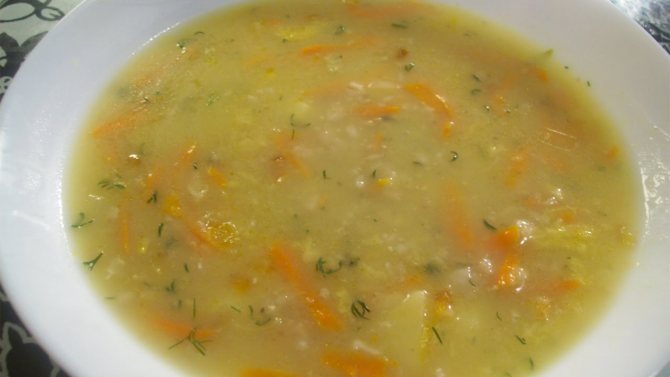
To prepare the soup, the oatmeal must be thoroughly washed and boiled, then strained, but the cereals should not be washed. The strained broth is brought to a boil again and a little salt is added to it. The final product should not have grain particles, and its consistency resembles cream.
Creamy soup with cauliflower, croutons and rice
To prepare the puree soup, you will need to boil the cauliflower and potatoes, pass them through a sieve, after first separating several small inflorescences from the cabbage.
The rice is boiled for at least an hour, after which it is ground and combined with mashed potatoes and cabbage. Pour white sauce over the soup, add butter, croutons and garnish with cabbage inflorescences. When the acute period of the disease has passed, you can not grind the vegetables, but cut them finely.
Savoy cabbage soup
To prepare cabbage soup, you will need to finely chop potatoes, carrots, parsley root, and onions. All vegetables, except potatoes, are simmered in water with a little added oil.
Separately, boil water, add potatoes and the resulting vegetable mixture, and boil for a quarter of an hour. Savoy cabbage is added 5 minutes before the end of cooking. Tomatoes without peel are placed along with it. Add some salt to the soup and bring to a boil. Before serving, you can put a few pieces of boiled lean meat on a plate.
Blue whiting with vegetables
The potatoes are boiled until half cooked, the zucchini, carrots and onions are chopped. Place all the vegetables in a baking dish and add green peas to them. The vegetables are topped with blue whiting fillets. Bake in the oven until a crust appears on the fish.
Menu for Saturday
- Oatmeal with a viscous consistency, cottage cheese and apple jelly should be prepared for breakfast.
- A glass of kefir and a salad of baked vegetables for the first snack.
- Vegetable soup, mashed potatoes with boiled fish or steamed cutlets and a glass of compote for lunch. You can complement your meal with a vegetable salad dressed with vegetable oil.
- For an afternoon snack - cottage cheese casserole and rosehip decoction.
- A small piece of steamed meat and a salad of baked vegetables for dinner. You can complement everything with a glass of sour milk and pumpkin pudding.
Menu table No. 1 for a week for gastritis
In terms of energy value, protein, fat and carbohydrate content, this is a physiologically complete diet. Strong stimulants of gastric secretion, irritants of its mucous membrane, lingering in the stomach for a long time and difficult to digest foods and dishes are limited. Food is prepared mainly pureed, boiled in water or steamed.
The first day of menu table No. 1 for gastritis
Breakfast: steamed egg omelet with milk, cottage cheese with jam, weak tea. Lunch. Fruit salad.
Lunch: rice soup, steamed fish cutlets with mashed potatoes, sweet apple jelly.
Afternoon snack: cocoa with milk and kefir.
Dinner: boiled noodles with minced meat, salad of boiled and mashed beets with sour cream, weak tea. Before bedtime. 250 ml kefir.
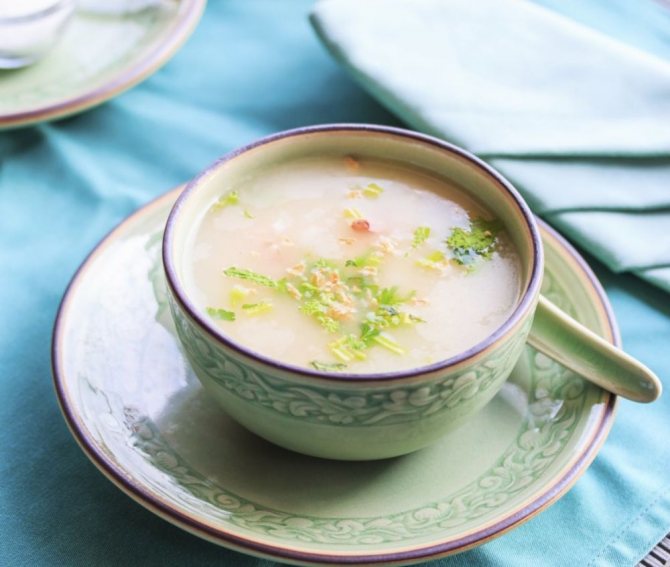
In terms of energy value, protein, fat and carbohydrate content, this is a physiologically complete diet
Second day of menu table No. 1 for gastritis
Breakfast: lazy dumplings with jam and sour cream, weak tea. Lunch. 1 banana.
Lunch: creamy soup of white beans, spinach and carrots, steamed veal, berry jelly.
Afternoon snack: sannik with pear filling.
Dinner: rice cutlets with minced beef, stewed zucchini. Before bedtime. Milk.
The third day of menu table No. 1 for gastritis
Breakfast: milk semolina porridge with jam, weak tea. Lunch. Peach and banana.
Lunch: pumpkin soup with milk, buckwheat soufflé, steamed cutlets.
Afternoon snack: baked apples.
Dinner: noodle casserole with cottage cheese. Before bedtime. Kefir.
Day four of menu table No. 1 for gastritis
Breakfast: rice porridge with milk, cottage cheese with honey, weak tea. Lunch. Fruit salad.
Lunch: cauliflower soup, chicken with vegetables, fruit jelly.
Afternoon snack: manna with apples.
Dinner: fish pudding, mashed potatoes. Before bedtime. Milk.
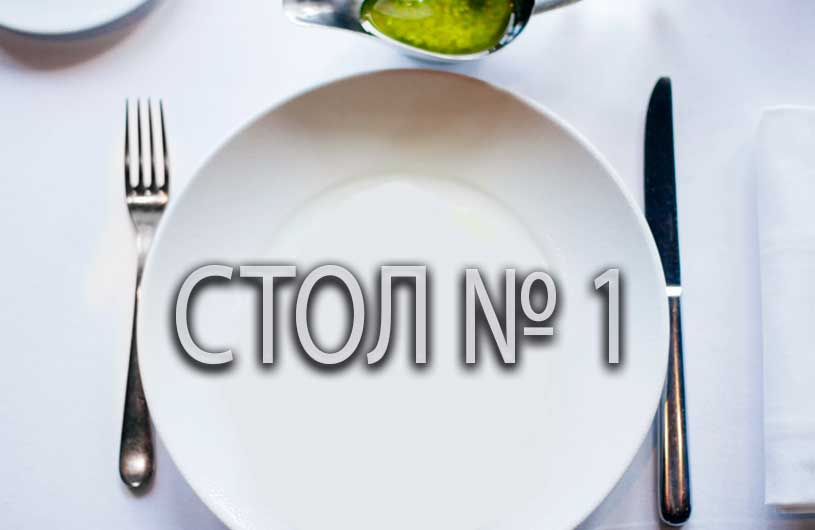
Food is prepared mainly pureed, boiled in water or steamed
Fifth day of menu table No. 1 for gastritis
Breakfast: buckwheat porridge with milk, steam omelette, weak coffee with milk. Lunch. 1 banana.
Lunch: mashed potato soup, rabbit pate, fruit compote.
Afternoon snack: baked apples.
Dinner: chicken with vegetables, sweet apple jelly. Before bedtime. Kefir.
Sixth day of menu table No. 1 for gastritis
Breakfast: oatmeal on water with butter, 1 soft-boiled egg, cocoa with milk. Lunch. Baked apples.
Lunch: cauliflower soup, steamed veal cutlets, buckwheat porridge.
Afternoon snack: 1 banana.
Dinner: vermicelli with minced meat, boiled carrot and potato salad, fruit compote. Before bedtime. Milk.
The seventh day of menu table No. 1 for gastritis
Breakfast: steam omelet, cottage cheese with jam, weak coffee with milk. Lunch. Fruit salad.
Lunch: pumpkin milk soup, veal souffle with vermicelli, fruit jelly.
Afternoon snack: manna with pear filling.
Dinner: steamed fish, mashed potatoes and carrots, rosehip broth. Before bedtime. Kefir.
Menu for Sunday
- For breakfast they prepare cottage cheese with fruit, a steamed protein omelet and a cocktail made from milk and sweet berries.
- For lunch, a vinaigrette without acidic ingredients and a rosehip decoction are perfect.
- For lunch - beetroot soup, steamed rabbit meat and viscous buckwheat porridge. You can wash down your meal with a glass of pear compote.
- For an afternoon snack, prepare apple and carrot puree.
- For dinner, a piece of beef is boiled or baked and cauliflower and carrots are stewed. You can also prepare fruit juice.
Diet number 5 requires a daily calorie intake of at least 3000. Therefore, the menu presented above is perfect for both women and men who are exposed to physical activity every day.
Reviews and results
Reviews from patients indicate that therapeutic nutrition for gastritis and stomach ulcers allows you to quickly relieve symptoms (pain and discomfort in the stomach, heartburn, belching disappear) and is an essential component of the treatment process.
- “... Chronic gastritis for more than 15 years. Diet is my salvation and the exacerbation just begins right away on the diet. I have long mastered cooking and methods of preparing dietary dishes, since my illness does not allow me to eat on a general basis. I already know by heart all my doctor’s prescriptions and what pills I need to take, but I try, even if not very strictly, to follow the diet prescribed to me”;
- “... Diagnosis of a stomach ulcer and exacerbation occurs periodically in the fall and spring. It happens more often if I make gross dietary mistakes or drink beer with friends. I understand that it’s impossible, but sometimes it’s impossible to resist. I immediately take medications and switch to Table No. 1, where I have been for a month. Usually during this time the exacerbation subsides, and I gradually switch to a common table.”
Recipes for some dishes for diet No. 1a, No. 1b
(weight of products is indicated per serving)
- Rice milk soup. Rinse rice (35g), add to boiling water and cook until done. Wipe. For convenience, you can grind the rice in a kitchen mill immediately before cooking. Add hot milk (200 ml), salt, sugar (5 g) and bring to a boil. You can flavor it with a piece of butter (5 g).
- Oat milk soup. Pour oatmeal (30 g) into boiling water (350 ml), cook with stirring until fully cooked. Strain through a sieve. Bring the resulting broth to a boil and remove from the stove. Add salt, sugar (2 g). Then stir a raw chicken egg (≈1\4 pcs.), Gradually adding hot milk (150 ml). In a water bath, without bringing to a boil and stirring constantly, cook until thickened. Mix all ingredients. Before eating, add a piece of butter (5 g).
- Steamed meat soufflé. Chicken or beef (100 g) is boiled and turned through a meat grinder. Add 5 g of flour to milk (50 ml), heat with constant stirring without bringing to a boil, cool. The resulting white sauce, one chicken yolk and a little vegetable oil are added to the meat, adding a little salt and stirring well until smooth. Beat the white of one chicken egg thoroughly and also mix with the resulting meat mixture. Place in a mold greased with vegetable oil and steam.
- Meat puree. Boiled meat (55) g through a meat grinder twice, add 45 ml of water or milk. Add salt and mix. In a bowl greased with vegetable oil, bring to a boil. Cool. Drizzle with a little oil before eating.
- Soft-boiled egg. Fill with cold water. Bring to a boil and cook for about 3 minutes. Immediately after cooking, place in cold water for 1 minute.
- Steamed omelette. Mix two chicken eggs, 50 ml of milk and a little salt and beat thoroughly. Steam until cooked, after greasing the pan with vegetable oil. When serving, add butter (7 g).
- Steamed meatballs. Mix minced meat (90 g) with soaked white bread (15 g), add salt. Additionally, pass through a meat grinder. Divide into several parts, roll into balls (4-5 pieces per serving). Steam for 10-15 minutes.
medlibera.ru
